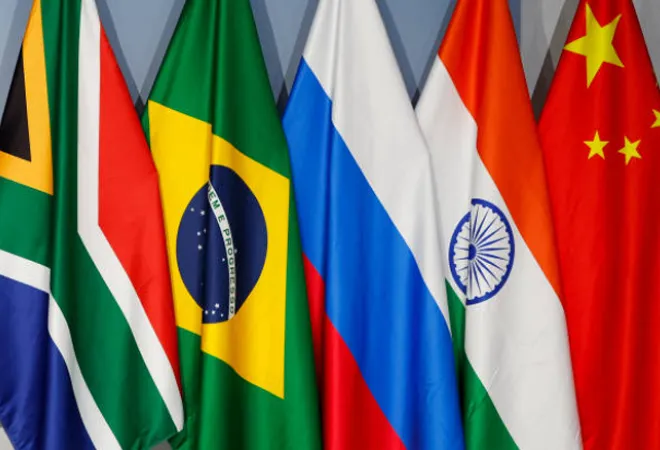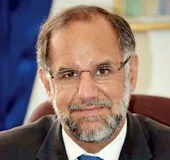
The 15th BRICS Summit at Johannesburg has gone further than any other in the recent past to modernise and galvanise the BRICS grouping to be more active and to assert its policy presence. It has sent a strong signal that the post-World War II order must accept our multipolar reality and change with the times.
The slew of applications to join the BRICS group are a symptom of a deeper malaise. The West’s proclivity to deploy unilateral financial sanctions, abuse international payment mechanisms, renege on climate finance commitments, and accord scant respect to food security and health imperatives of the Global South, especially during the pandemic, are only some of the elements responsible for the growing disenchantment with the prevailing international system.
This is not to blame all ills on the ‘western’ system alone. There are problems aplenty within BRICS itself. Disquiet over Russia’s invasion of Ukraine is manifest in the manner in which the 2023
Johannesburg Declaration refers to ‘national positions concerning the conflict’ and also draws attention to the abortive mediation effort of African states and others to resolve the conflict.
The slew of applications to join the BRICS group are a symptom of a deeper malaise.
And China is no slouch when it comes to pursuing aggressive policies against its neighbours. It is also seen as a part of the problem when developing countries discuss the issue of unsustainable debt burdens. China’s unwillingness to share data about the terms, duration and even the quantum of loans provided under opaque bilateral aid agreements has not only delayed debt relief arrangements but also exacerbated the economic woes of countries like Kenya, Zambia, Zimbabwe and Angola in Africa and Sri Lanka in our own neighbourhood.
India, of course, has its own set of grievances with China that extend well beyond Beijing’s belligerent actions on the Line of Actual Control. China continues to stubbornly block proposals for any reform of the United Nations Security Council that would accord India its rightful place on the horseshoe table. Besides, there is the issue of trade volumes and vulnerable supply chains with China being at the centre of that storm.
China continues to stubbornly block proposals for any reform of the United Nations Security Council that would accord India its rightful place on the horseshoe table.
The fact that BRICS has held together for 15 years despite these strains demonstrates the yearning for an alternate voice—not one that is designed to be anti-West, as some are tempted to declaim, but one that enunciates an alternative to the G7 perspective. One where the Global South has agency, where both the diagnosis of ailments and the remedies prescribed for them emanate from within, and where leading voices from Asia, Africa and Latin America come together to demand a more just and equitable order. There is a willingness to cooperate on issues impacting development, which have an impact beyond any bilateral issues the BRICS countries might have.
BRICS expansion and its implications
The expansion of the BRICS to a BRICS+ format and the adoption of guiding principles, standards, and procedures for the same, have potentially made the BRICS grouping a more attractive institution for consensus building and dialogue in the developing world. Even the profile of the new members who will officially join BRICS+ from 1 January 2024—Argentina, Egypt, Ethiopia, Iran, Saudi Arabia and the UAE—suggest that the system is headed for something beyond traditionally “acceptable” partners in the eyes of the West. The presence of Iran especially and the reactions to it in the coming days will be interesting to follow.
But the devil, as always, will lie in the details. The guiding principles for expansion have been announced without being revealed. The fact is that it will be well-nigh impossible to define any objective set of criteria that accommodates the diverse group of aspirants that range from absolute monarchies and autocracies to vibrant democracies, from high-flying economies to those struggling for survival. There is also the unspoken concern that one country may pack the expanded group with its own clients to further its own ambition of becoming the unchallenged voice of the emerging world. Such ambition can only be checked when consensus on the admission of new applicants becomes the main criterion. That appears to be the rationale behind Brazil and India’s somewhat reluctant acquiescence to the expansion. The standards, procedures, and guiding principles that have been agreed on would have ostensibly addressed their concerns. What we don’t need is another loquacious G-77 style talk shop.
The guiding principles for expansion have been announced without being revealed.
An important factor here is that decision-making at BRICS is based entirely on the principle of consensus. There is the ever-present danger of inefficiencies creeping into the system when an all or nothing agreement is required to move forward. It will be interesting therefore to see the frameworks through which BRICS+ is expected to function and the extent to which the last word will lie with the original 5 BRICS members.
It would also be important to see if the expanded group can actually design new systems of cooperation and if BRICS+ can get out of the debilitating paralysis caused in BRICS by the strained ties between India and China. Can it move beyond the legitimate success of the New Development Bank and make a real contribution to global financial architecture? The hype about de-dollarisation and a common BRICS currency might be premature but trading in national currencies is becoming a reality. The recent rupee-designated oil transaction between India and UAE is not merely a swipe at the petrodollar arrangement that has prevailed since 1973. It is also a signal that as BRICS + starts to include the world’s major commodity exporters like Russia, Brazil, South Africa, Saudi Arabia and UAE and importers like China, Egypt and India, they can try to reduce their dependence on the dollar by trading in national currencies.
The recent rupee-designated oil transaction between India and UAE is not merely a swipe at the petrodollar arrangement that has prevailed since 1973.
As the 94-para long Declaration suggests, there is no dearth of good ideas to press for an alternate world order that lends a more sympathetic ear for the developing many versus the developed few. The challenge ahead will not be of who else joins BRICS
, but what policy decisions are taken and how are they implemented. The consensus-driven decision-making process of BRICS won’t make it easy but for now, it is worth a serious effort.
Navdeep Suri is a Distinguished Fellow at the Observer Research Foundation
Jhanvi Tripathi is an Associate Fellow with the Geoeconomics programme at the Observer Research Foundation
The views expressed above belong to the author(s). ORF research and analyses now available on Telegram! Click here to access our curated content — blogs, longforms and interviews.



 The 15th BRICS Summit at Johannesburg has gone further than any other in the recent past to modernise and galvanise the BRICS grouping to be more active and to assert its policy presence. It has sent a strong signal that the post-World War II order must accept our multipolar reality and change with the times.
The slew of applications to join the BRICS group are a symptom of a deeper malaise. The West’s proclivity to deploy unilateral financial sanctions, abuse international payment mechanisms, renege on climate finance commitments, and accord scant respect to food security and health imperatives of the Global South, especially during the pandemic, are only some of the elements responsible for the growing disenchantment with the prevailing international system.
This is not to blame all ills on the ‘western’ system alone. There are problems aplenty within BRICS itself. Disquiet over Russia’s invasion of Ukraine is manifest in the manner in which the 2023
The 15th BRICS Summit at Johannesburg has gone further than any other in the recent past to modernise and galvanise the BRICS grouping to be more active and to assert its policy presence. It has sent a strong signal that the post-World War II order must accept our multipolar reality and change with the times.
The slew of applications to join the BRICS group are a symptom of a deeper malaise. The West’s proclivity to deploy unilateral financial sanctions, abuse international payment mechanisms, renege on climate finance commitments, and accord scant respect to food security and health imperatives of the Global South, especially during the pandemic, are only some of the elements responsible for the growing disenchantment with the prevailing international system.
This is not to blame all ills on the ‘western’ system alone. There are problems aplenty within BRICS itself. Disquiet over Russia’s invasion of Ukraine is manifest in the manner in which the 2023  PREV
PREV



